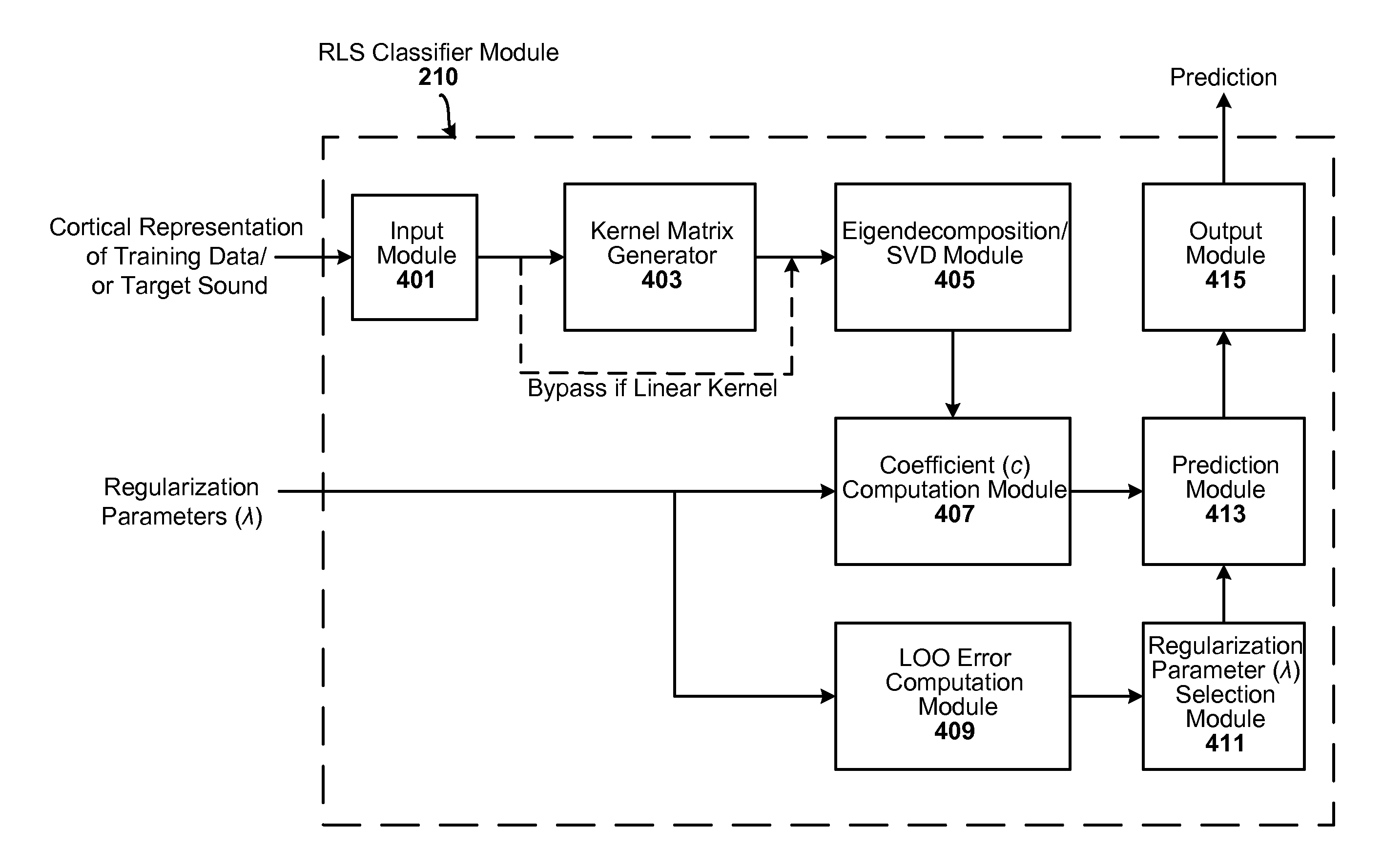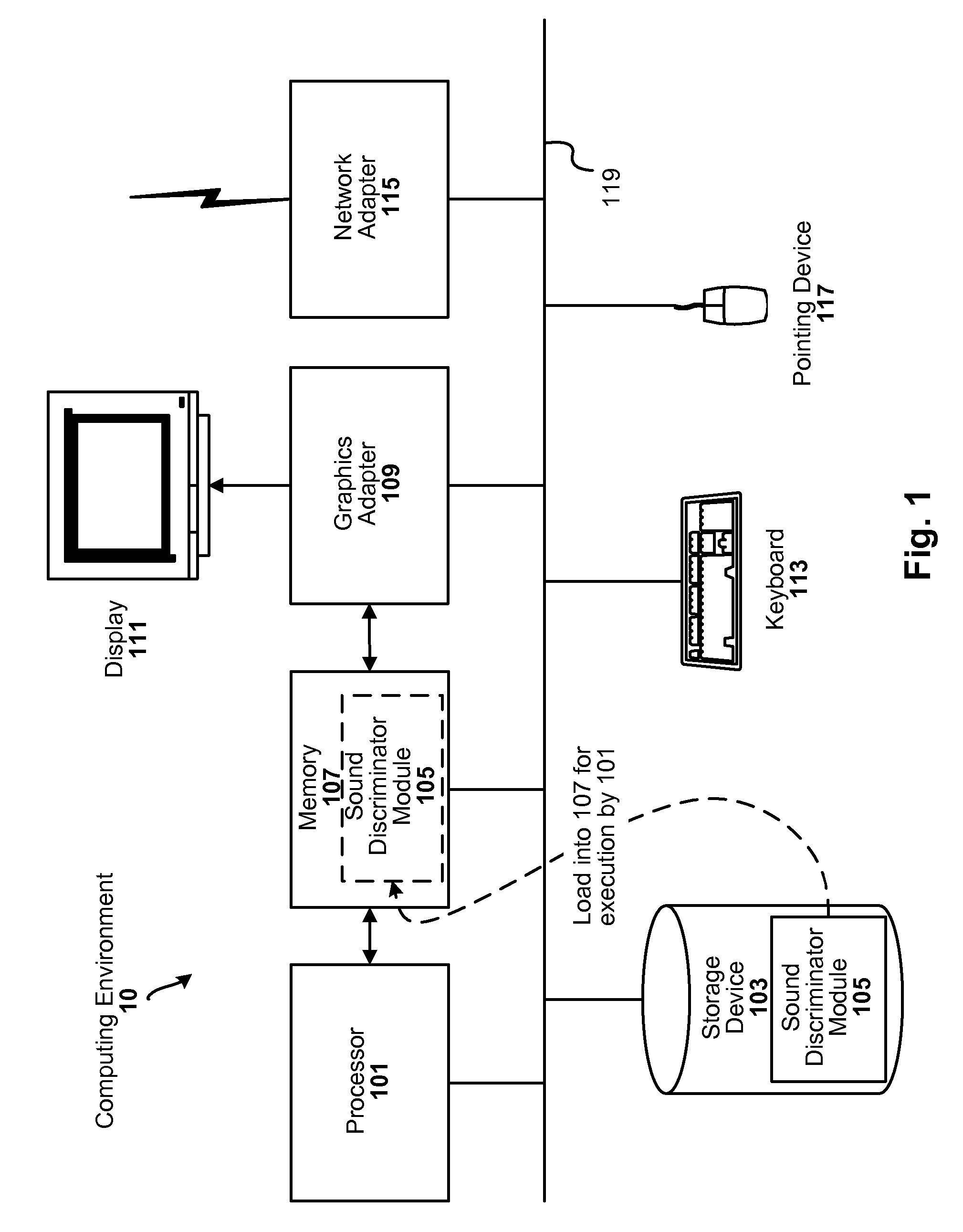Discriminating speech and non-speech with regularized least squares
a technology of speech and non-speech, applied in the field of sound discrimination, can solve the problems of difficult task of discriminating speech from non-speech, relatively high conceptual and computational complexity, and many drawbacks
- Summary
- Abstract
- Description
- Claims
- Application Information
AI Technical Summary
Benefits of technology
Problems solved by technology
Method used
Image
Examples
Embodiment Construction
[0020]Sound discrimination techniques are disclosed that are more accurate, conceptually simpler, and computationally simpler relative to conventional techniques, such as the HOSVD with Gaussian SVM.
[0021]The techniques can be employed, for example, in the task of discriminating speech and non-speech in a noisy environment. In one particular embodiment of the present invention, a linear Regularized Least Squares (RLS) classifier is used directly on a high-dimensional cortical representation of the target sound. The regularization constant lambda (λ) is selected automatically, yielding a parameter-free learning system (i.e., no tunable parameters).
[0022]The single regularization constant λ can be found automatically, for example, through leave-one-out (LOO) cross-validation. In addition, because dimensionality reduction is avoided, the linear classifier can be viewed directly in the same space as the data (the high-dimensional hyperplane can be viewed directly in the cortical space),...
PUM
 Login to View More
Login to View More Abstract
Description
Claims
Application Information
 Login to View More
Login to View More - R&D
- Intellectual Property
- Life Sciences
- Materials
- Tech Scout
- Unparalleled Data Quality
- Higher Quality Content
- 60% Fewer Hallucinations
Browse by: Latest US Patents, China's latest patents, Technical Efficacy Thesaurus, Application Domain, Technology Topic, Popular Technical Reports.
© 2025 PatSnap. All rights reserved.Legal|Privacy policy|Modern Slavery Act Transparency Statement|Sitemap|About US| Contact US: help@patsnap.com



